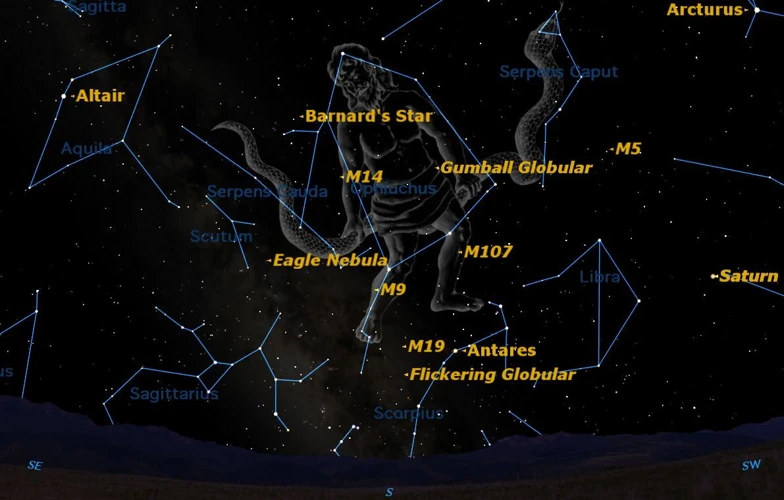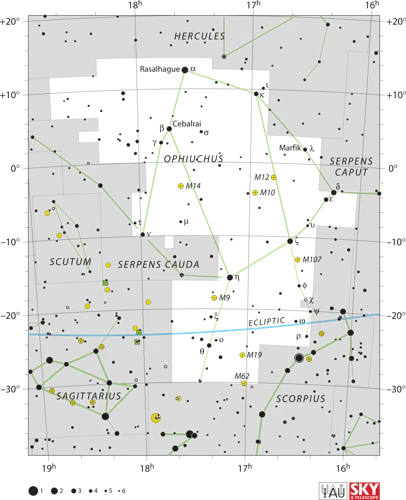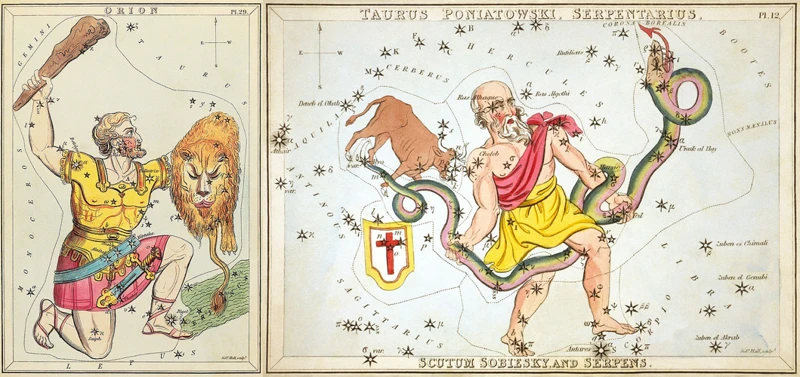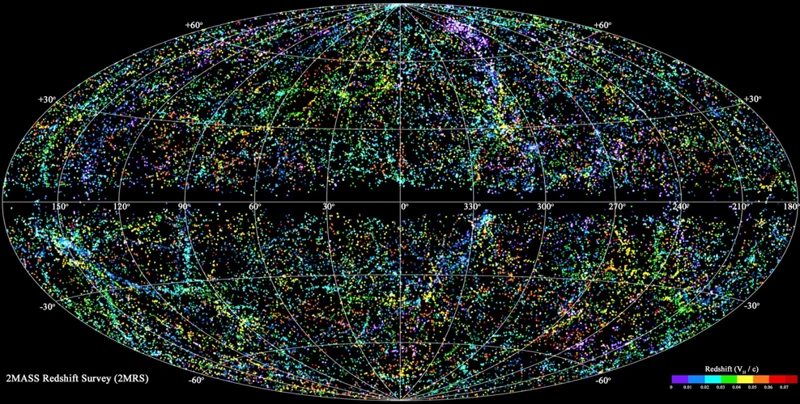In a world of countless mysteries and wonders, the night sky has always captivated human imagination. Over thousands of years, civilizations from every corner of the globe have gazed upon the celestial canopy and identified patterns, giving birth to the concept of constellations. These ancient configurations of stars have not only served as a map for navigation, but have also held deep cultural and spiritual significance. Yet, hidden within these constellations are astronomical alignments that have recently been uncovered. By delving into the science behind alignments and exploring the ancient observatories used to observe these celestial phenomena, we can begin to unravel the secrets of the past. Join us on a journey to discover the incredible astronomical alignments of ancient constellations and delve into the theories and speculations surrounding their significance.
Contents
- The History of Constellations
- Astronomical Alignments
- Ancient Constellation Alignments
- Theories and Interpretations
- Mysteries and Speculations
- Conclusion
-
Frequently Asked Questions
- What are constellations?
- How were ancient constellations formed?
- What is the significance of constellations in astrology?
- How were ancient constellations used for navigation?
- What is the science behind astronomical alignments?
- Why did ancient civilizations build observatories?
- What is the Orion alignment?
- What is the Pleiades alignment?
- What is the Draco alignment?
- How did the ancient knowledge of constellations fade away?
- References
-
Frequently Asked Questions
- What are astronomical alignments?
- How were ancient constellations formed?
- What is the astrological significance of constellations?
- How do astronomical alignments work?
- What were ancient observatories used for?
- What is the Orion alignment?
- What is the Pleiades alignment?
- What is the Draco alignment?
- What religious and cultural significance do these alignments hold?
- What is the connection between astronomical alignments and extraterrestrial theories?
- References
- Read More
The History of Constellations

The History of Constellations dates back to ancient times when early civilizations first looked up at the night sky in awe and wonder. Ancient Origins have been traced to Mesopotamia, where early astronomers created the first known star charts over 4,000 years ago. These early constellations were intricately linked to mythology and religious beliefs, with celestial figures representing gods, animals, and legendary heroes. The ancient Greeks later adopted many of these constellations and assigned names to them that are still used today. The 12 zodiac constellations, such as Libra and Aries, played a significant role in astrology, guiding individuals’ personalities and relationships. Astrological Significance became deeply ingrained in cultural practices and influenced everything from daily horoscopes to compatibility readings, such as the compatibility between Libra and Aries. Additionally, ancient civilizations across the globe, including the Egyptians, Persians, and Chinese, developed their own unique constellations based on their cultural beliefs and astronomical observations. Cleopatra, the last pharaoh of Egypt, was believed to have been influenced by the stars and used astrology as a tool for governance and decision-making. These rich historical connections make the study of constellations not just a scientific endeavor but a glimpse into our collective human heritage and fascination with the heavens.
Ancient Origins
The Ancient Origins of constellations can be traced back to different civilizations throughout history. In Mesopotamia, the earliest known star charts were created by astronomers around 2,000 BCE. These early astronomers observed the night sky and identified groupings of stars, which they connected to various mythological figures and narratives. The Sumerians, for example, associated the constellation known as “The Great Twins” with the Epic of Gilgamesh. In ancient Egypt, certain constellations were linked to their religious beliefs and rituals. The constellation Orion, known as “Sah” in Egyptian, represented Osiris, the god of the afterlife and rebirth. Similarly, in ancient China, constellations were deeply intertwined with their spiritual and celestial beliefs. The Chinese zodiac, consisting of twelve animal constellations, determined a person’s birth year and influenced their personality traits and destiny. The ancient Greeks borrowed from the Mesopotamian and Egyptian constellations, and later added their own interpretations. This blending of cultures and beliefs laid the foundation for the constellations we recognize today. The interplay between astronomy, mythology, and astrology in ancient civilizations showcases our enduring fascination with the stars and their connections to our lives and identities.
Astrological Significance
Astrological Significance of constellations has played a profound role in shaping human beliefs and understanding of personality traits and destiny. Each zodiac constellation is associated with specific traits and characteristics that are believed to influence individuals born under their influence. For example, Libra is associated with balance, harmony, and a natural sense of justice, while Aries represents energy, ambition, and assertiveness. Astrologers and enthusiasts often analyze Compatbility between different zodiac signs, such as Libra and Aries, to determine the potential for harmonious relationships or conflicts. The constellations are also said to influence the behavior and personal journey of individuals. Analyzing the compassionate and imaginative traits of Pisces, for instance, can shed light on the emotional and creative aspects of a person’s life. Throughout history, ancient societies placed great importance on astrology, using it as a guide in decision-making and understanding personal and collective destinies. Even Cleopatra, the last pharaoh of Egypt, was known to have been influenced by astrology as she sought to align herself with the stars and divine guidance. By exploring the astrological significance of constellations, we gain insight into the ways in which ancient civilizations sought to navigate and make sense of the world around them.
Astronomical Alignments

Astronomical Alignments have long intrigued astronomers, historians, and enthusiasts alike. The Science behind Alignments involves the study of how celestial bodies, such as stars, planets, and constellations, align with specific points or objects on Earth. These alignments can occur in various ways, including geometric configurations and celestial events like solstices and equinoxes. To observe and track these alignments, Ancient Observatories were constructed across different civilizations, showcasing the advanced astronomical knowledge of these ancient cultures. One such notable observatory is Stonehenge in England, known for its alignment with the sunrise during the summer solstice. The Mayan civilization also had intricately aligned structures like Chichen Itza, where the Temple of Kukulkan exhibits a remarkable alignment with the sun during the spring and autumn equinoxes. These alignments were not merely coincidental but held great cultural and religious significance for these ancient civilizations. The study of astronomical alignments provides valuable insights into the celestial knowledge and the techniques used by our ancestors to navigate and interpret the cosmos. Discovering the methods and accuracy of these alignments opens up a world of possibilities and deepens our understanding of the interconnectedness between Earth and the celestial realm.
The Science behind Alignments
The Science behind Alignments involves a combination of astronomy and geometry. Astronomers use precise measurements and calculations to determine the position of celestial objects in the sky. Alignments occur when these objects, such as stars or planets, appear to form straight lines or geometric patterns when observed from Earth. One example of alignment is the phenomenon known as a conjunction, where two or more celestial bodies appear close together in the sky. This occurs when their orbits align in such a way that they appear to be in close proximity from our perspective on Earth. Another type of alignment is called opposition, where two objects are on opposite sides of the sky as observed from Earth. These alignments can be observed using specialized equipment and are often the basis for scientific research and astronomical discoveries. In ancient times, alignments held great significance for many cultures, as they were believed to have astrological and religious meanings. The alignment between the zodiac signs Libra and Aries, for example, is said to have implications for compatibility and relationships. While alignments may not have mystical implications, studying them provides valuable insights into the mechanics of the universe and the interconnectedness of celestial bodies. Many ancient observatories were built specifically to observe and track these alignments, serving as a testament to humanity’s fascination with the night sky and our desire to understand the cosmos.
Ancient Observatories
Ancient Observatories played a crucial role in unraveling the astronomical alignments of ancient constellations. These observatories were architectural marvels designed to precisely track the movements of celestial bodies. One such notable observatory is the Stonehenge in England, constructed around 3000 BCE. Stonehenge’s circular arrangement of massive stones is believed to have served as a calendar, aligning with various astronomical events such as the summer solstice. In Chankillo, Peru, the remains of an ancient solar observatory dating back to the 4th century BCE have been discovered. This observatory consists of a row of thirteen towers that align with the rising and setting of the sun during solstices and equinoxes. The Greeks also had their observatories, one of the most famous being the Tower of the Winds in Athens. This ancient clocktower utilized sundials and a water clock to measure time and observe celestial movements. These ancient observatories demonstrate the intricate knowledge and sophistication of ancient civilizations in understanding celestial alignments. By utilizing advanced architectural and astronomical techniques, they were able to unlock the secrets of the cosmos and create structures that stood as a testament to human curiosity and ingenuity throughout history.
Ancient Constellation Alignments

Ancient Constellation Alignments have fascinated astronomers and historians alike as they reveal the intricate connections between the celestial and human realms. The Orion Alignment stands out as one of the most prominent alignments observed in various ancient civilizations. The striking pattern of stars in the constellation Orion aligns with important landmarks on Earth, such as the pyramids of Egypt and the temples of Angkor Wat in Cambodia. This alignment suggests a deliberate intention to connect the earthly and the celestial domains. The Pleiades Alignment, another significant constellation, aligns with ancient megalithic structures like Stonehenge in England and the Machu Picchu in Peru. The alignment hints at the shared astronomical knowledge and the universal symbolism embedded in these ancient sites. Additionally, the Draco Alignment, characterized by the constellation Draco, aligns with the Great Pyramids in Egypt and several ancient sacred sites along the Silk Road in Central Asia. These ancient constellation alignments raise intriguing questions about the ancient civilizations’ understanding of the cosmos, their cultural practices, and potential shared knowledge across different regions. Exploring the theories and interpretations behind these alignments sheds light on the profound religious and cultural significance they held for these civilizations. Some even speculate about Extraterrestrial Connections, considering the precision required for such alignments and the potential influence of advanced beings. Whether the alignments hold scientific, spiritual, or extraterrestrial significance, they are a testament to the intricate relationship between the heavens above and human civilizations on Earth.
The Orion Alignment
The Orion Alignment is a remarkable astronomical phenomenon that has fascinated scientists and astronomers for centuries. Located in the constellation of Orion, this alignment refers to the positioning of stars and celestial objects within this particular region of the night sky. At the center of this alignment is the mighty Orion’s Belt, a distinctive line of three bright stars that seem to mark the hunter’s waist. Surrounding the belt are other prominent stars, such as Betelgeuse and Rigel, which contribute to the overall alignment. The significance of the Orion Alignment lies in its connection to ancient civilizations and their intricate knowledge of celestial patterns. Many ancient cultures, including the Egyptians, Greeks, and Mayans, incorporated the Orion constellation into their mythology and religious beliefs. The pyramids of Egypt, for example, align with the stars of Orion’s Belt, suggesting a deep cosmic connection and possibly serving as a guide for construction. Some researchers speculate that these alignments were intentional, representing a celestial roadmap left for future generations to decipher. Others believe that the alignment holds cultural and spiritual significance, reflecting ancient beliefs and rituals. The Orion Alignment stands as a testament to the human capacity for observation and interpretation, bridging the gap between the earthly and the celestial realms. For those interested in exploring the intersection between astronomy and astrology, the constellation of Orion is also relevant in understanding zodiac compatibility, such as compatibility between Libra and Aries, as it aligns with certain zodiac constellations.
The Pleiades Alignment
The Pleiades Alignment is a fascinating astronomical phenomenon that has captured the attention of researchers and stargazers alike. The Pleiades, also known as the Seven Sisters, is an open star cluster located in the constellation of Taurus. This cluster is composed of several young, hot stars that shine brightly in the night sky. What makes the Pleiades Alignment intriguing is its alignment with other celestial objects. Ancient civilizations, including the Greeks and the Mesoamericans, noticed that the Pleiades cluster aligned with specific solstices and equinoxes. Some cultures even associated these alignments with agricultural cycles, using them as important markers for planting and harvesting crops. Today, astronomers continue to study the Pleiades Alignment, delving into the science behind its occurrence and evaluating its possible cultural and religious significance. This alignment has also sparked interest in the connections between celestial bodies and human events, leading to speculations about its influence on individuals born under particular zodiac signs, such as Pisces. While the exact significance of the Pleiades Alignment remains a subject of interpretation and investigation, its beauty and intrigue continue to inspire awe and wonder in those who observe it.
The Draco Alignment
The Draco Alignment is one of the fascinating astronomical alignments associated with ancient constellations. The constellation Draco, also known as the Dragon, is a prominent constellation in the northern sky. It is composed of several stars that form a winding shape resembling a dragon or serpent. In recent studies, researchers have discovered a possible alignment between the Draco constellation and certain ancient structures on Earth. One such example is the Great Pyramid of Giza in Egypt, which aligns with the North Star, Polaris, and the head of Draco. This alignment suggests a remarkable level of astronomical knowledge possessed by the ancient Egyptians, as they were able to create structures in precise alignment with celestial objects. The significance of this alignment is still a subject of debate, with some theories suggesting that it may have held religious or ceremonial importance. The correlation between the Draco Alignment and the celestial world invites speculation on the connections between ancient civilizations and the cosmos. Exploring such alignments can provide valuable insights into the astronomical knowledge and beliefs of our ancestors, shedding light on their understanding of the universe and their place within it.
Theories and Interpretations

Theories and Interpretations surrounding the astronomical alignments of ancient constellations have sparked much debate and intrigue among researchers and scholars. One significant interpretation revolves around the Religious and Cultural Significance attached to these alignments. Many ancient civilizations considered the celestial bodies as manifestations of their gods and incorporated them into their religious practices. The alignment of specific constellations during sacred ceremonies or celestial events held deep symbolism and marked important milestones in their calendars. Another interpretation that has gained attention is the idea of Extraterrestrial Connections. Some theorists propose that the precise alignments observed in ancient constellations could be evidence of early contact or communication with advanced extraterrestrial civilizations. The intricate alignments, they argue, may be a deliberate message or map left behind by extraterrestrial beings. While these theories may seem far-fetched, they provide alternative perspectives that push the boundaries of our understanding. Exploring these theories and interpretations helps us appreciate the multifaceted nature of ancient constellations and their impact on different cultures and belief systems throughout history.
Religious and Cultural Significance
The cosmos has long held a deep Religious and Cultural Significance for civilizations throughout history. In ancient times, constellations were intricately tied to religious beliefs and mythologies, with celestial figures representing gods and goddesses. The Egyptians, for example, attributed great importance to the stars in their religious practices, associating certain constellations with their deities and using them to guide their rituals and ceremonies. In addition to religious significance, constellations played a crucial role in cultural practices. For instance, the Chinese zodiac is heavily influenced by celestial observations, with each year associated with a specific animal constellation. These zodiac signs hold great cultural significance and influence various aspects of life, including interpersonal relationships and even one’s personality traits. In Western astrology, the traits of individuals born under the Libra and Aries signs, as indicated by their zodiac compatibility, reveal their distinctive characteristics and potential compatibility as per astrological beliefs. Constellations have influenced art, literature, and architecture, leaving their indelible mark on human creativity and expression. From ancient temples adorned with celestial motifs to intricate cave paintings depicting star patterns, constellations have left an enduring impact on human culture, both past and present. The continued appreciation and exploration of constellations’ religious and cultural significance allow us to delve deeper into our collective history and find meaning in the magnificence of the night sky.
Extraterrestrial Connections
Extraterrestrial Connections have long intrigued both scientists and enthusiasts alike. Some researchers propose that the alignment of ancient constellations may hold clues to possible interactions with beings from other worlds. One theory suggests that these constellations were specifically arranged to communicate with extraterrestrial civilizations. According to this idea, advanced alien species may have influenced the designs of constellations to convey messages or mark significant events, hoping that their observations would be noticed by civilizations on Earth. Another perspective explores the possibility of ancient civilizations receiving knowledge or guidance from extraterrestrial beings, leading to the creation of constellations in specific patterns. While these ideas remain speculative, they spark the imagination and fuel the ongoing debate on the true origins and meanings behind the alignments of these celestial configurations. Whether these connections are a result of human creativity, divine intervention, or even extraterrestrial influence, they add an intriguing layer of mystery to our exploration of ancient constellations and their significance.
Mysteries and Speculations

Mysteries and Speculations surround the ancient constellations and their alignments, leaving room for imagination and intrigue. The Dark Constellations, for instance, hold a sense of enigma as they are not officially recognized by modern astronomy. These elusive constellations were mentioned in ancient texts but seem to have been lost or forgotten over time. Scholars and researchers have delved into these texts, utilizing their knowledge of ancient languages and symbolisms to uncover their hidden meanings and rediscover these lost constellations. Another intriguing aspect is the idea of Lost Constellation Knowledge. Throughout history, countless civilizations have come and gone, taking with them the intricate understanding and interpretations of the stars. It raises questions about what wisdom and insights may have been lost to time. Some speculate that there may be hidden messages, codes, or even extraterrestrial connections embedded within these celestial patterns. Speaking of extraterrestrial connections, the idea that ancient civilizations may have received astronomical knowledge from advanced beings is a topic of much debate. Some theories suggest that ancient alien visitors interacted with humans, sharing their knowledge of the stars and possibly influencing the creation of constellations. These speculations spark curiosity and encourage further exploration into the mysteries that lie within the enigmatic world of constellations.
The Dark Constellations
The Dark Constellations, also known as Ophiuchus, have long intrigued astronomers and stargazers. These constellations, often overshadowed by their more famous counterparts, form a part of the celestial sphere that isn’t as widely recognized. Ophiuchus, depicted as a serpent-bearer, is often linked to Asclepius, the Greek god of medicine and healing. Despite not being part of the traditional zodiac, Ophiuchus has gained attention in recent years due to its potential impact on astrological readings. Some believe that those born under this constellation possess traits that deviate from their original zodiac sign. However, there is ongoing debate and controversy regarding the inclusion and interpretation of Ophiuchus in astrology. Exploring the enigmatic nature of these Dark Constellations opens up new possibilities for understanding and analyzing the vast cosmic tapestry. Whether studying the Libra-Aries compatibility or analyzing the compassionate and imaginative traits of Pisces, delving into the lesser-known constellations adds depth and complexity to our understanding of the night sky.
Lost Constellation Knowledge
The ancient knowledge surrounding constellations goes far beyond their mere identification and interpretation. Sadly, much of this Lost Constellation Knowledge has been obscured by the passage of time and the decline of ancient civilizations. Faced with the challenges of preserving information for future generations, ancient cultures relied heavily on oral transmission and visual representations. However, due to various factors such as wars, invasions, and the gradual erosion of cultural practices, valuable insights into constellations were lost. The destruction of ancient libraries and astronomical observatories further contributed to the disappearance of crucial astronomical texts and records. For instance, the Library of Alexandria, home to countless documents from across the ancient world, including works related to astrology and constellations such as those linked to the traits of Pisces, tragically suffered destruction, leading to an irreparable loss of knowledge. While much has been recovered and deciphered through archaeological discoveries and research, it is undeniable that a significant portion of ancient constellation knowledge remains forever lost, leaving modern astronomers and historians with lingering questions and a genuine yearning to uncover the hidden wisdom of our ancestors.
Conclusion

In conclusion, the astronomical alignments of ancient constellations continue to intrigue and fascinate us. The History of Constellations reveals the deep cultural and spiritual significance these celestial patterns held for ancient civilizations. From the earliest origins in Mesopotamia to the adoption and adaptation by the Greeks and other cultures, constellations have served as both practical navigational tools and sources of mythological and astrological interpretations. The study of astronomical alignments sheds light on the scientific understanding and observational prowess of ancient astronomers. Ancient Observatories provided a dedicated space for observing and recording these celestial phenomena. The Orion Alignment, Pleiades Alignment, and Draco Alignment are just a few examples of the alignments that have been discovered, each potentially holding unique religious, cultural, and astronomical significance. Theories and Interpretations vary, with some suggesting extraterrestrial connections and others emphasizing the religious and cultural implications. The mysteries and speculations surrounding the Dark Constellations and the potential loss of ancient constellation knowledge further add to the allure and complexity of these celestial wonders. As we delve deeper into the study of ancient constellations, their alignments, and their meanings, we gain a greater appreciation for the rich tapestry of human history and our enduring fascination with the vast cosmos.
Frequently Asked Questions

What are constellations?
Constellations are patterns of stars that have been identified and named by humans based on their perceived shapes and configurations in the night sky.
How were ancient constellations formed?
Ancient constellations were formed as civilizations observed the night sky and recognized recurring patterns among the stars. These patterns were often associated with mythological figures, animals, or important symbols within their culture.
What is the significance of constellations in astrology?
Constellations play a crucial role in astrology as they form the basis of the zodiac signs. Each zodiac sign is associated with a specific constellation and represents certain personality traits and characteristics believed to influence individuals born under that sign.
Ancient seafarers and explorers relied on constellations as a navigation tool. By observing the positions and movements of specific constellations, they could determine their direction and even calculate their latitude and longitude.
What is the science behind astronomical alignments?
Astronomical alignments occur when celestial objects, such as planets, stars, or constellations, appear in specific positions relative to one another or earthly landmarks. These alignments can be studied and predicted using principles from astronomy and geometry.
Why did ancient civilizations build observatories?
Ancient civilizations built observatories to precisely observe celestial events and track the movements of stars and planets. These observations were often crucial for agricultural planning, religious rituals, and even predicting eclipses or other astronomical phenomena.
What is the Orion alignment?
The Orion alignment refers to the arrangement of stars in the Orion constellation that align with significant points on the Earth or other celestial objects. This alignment has been theorized to have cultural or astronomical significance for ancient civilizations.
What is the Pleiades alignment?
The Pleiades alignment refers to the alignment of the Pleiades star cluster with specific locations or celestial bodies. Ancient cultures around the world have attributed spiritual, seasonal, or agricultural significance to this alignment.
What is the Draco alignment?
The Draco alignment refers to the alignment of the Draco constellation with other celestial objects or important sites on Earth. It has been linked to ancient cultural beliefs and practices, though its exact significance is still a topic of speculation.
How did the ancient knowledge of constellations fade away?
The knowledge of ancient constellations gradually faded away over time due to various factors such as societal changes, cultural shifts, and the loss of interest in astronomy. With the advent of new scientific discoveries, ancient constellation knowledge was sometimes dismissed or overshadowed by modern astronomy.
References
- Sun-Earth Day 2011
- THE ROLE OF ASTRONOMICAL ALIGNMENTS IN …
- Finding Astronomical Alignments in Ancient Monuments (or …
Frequently Asked Questions

What are astronomical alignments?
Astronomical alignments refer to the positioning and arrangement of celestial bodies, such as stars and planets, in relation to one another or to specific landmarks on Earth.
How were ancient constellations formed?
Ancient civilizations often created constellations by connecting patterns of stars in the night sky, assigning them names and stories based on their cultural beliefs and myths.
What is the astrological significance of constellations?
Constellations have been widely used in astrology to determine personalities, predict future events, and provide guidance based on the position of celestial bodies at the time of birth.
How do astronomical alignments work?
Astronomical alignments occur when specific celestial bodies or constellations are in a particular position in relation to Earth, often aligning with important landmarks or celestial events.
What were ancient observatories used for?
Ancient observatories were used by civilizations like the Maya and the Egyptians to track celestial movements, observe astronomical events, and predict important dates and seasons.
What is the Orion alignment?
The Orion alignment refers to the alignment of the stars in the constellation Orion with significant landmarks or celestial events, leading to various theories and interpretations.
What is the Pleiades alignment?
The Pleiades alignment involves the alignment of the Pleiades star cluster with other celestial objects or significant points on Earth, believed to hold cultural and religious significance in different civilizations.
What is the Draco alignment?
The Draco alignment refers to the alignment of the constellation Draco, also known as the Dragon, with other celestial bodies or landmarks, sparking discussions about its possible meanings and connections.
What religious and cultural significance do these alignments hold?
These alignments have often been associated with religious and cultural beliefs, with many ancient civilizations incorporating them into their rituals, ceremonies, and mythologies.
What is the connection between astronomical alignments and extraterrestrial theories?
Some theories propose that astronomical alignments were intentionally created by ancient civilizations to communicate with or pay homage to extraterrestrial beings.







